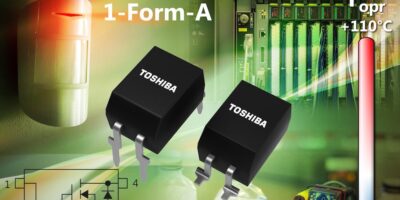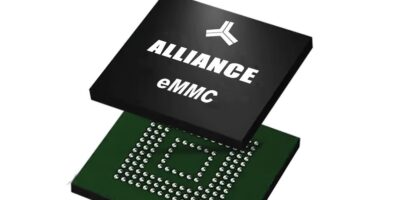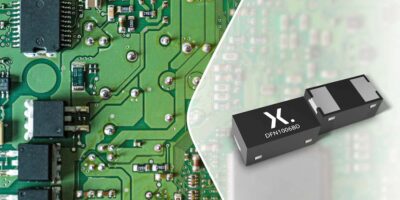Two normal open 1-Form-A photo relays from Toshiba Electronics combine a MOSFET optically coupled to an infra red LED, making them suitable for a wide range of applications including use in smart meters, passive infrared (PIR) sensors in security systems and building automation applications. The TLP223GA and TLP223J are also intended for use in industrial applications such as programmable logic controllers (PLCs), I/O interfaces and many types of sensors. They can also be used to replace a mechanical relay with a solid-state device.
Both photo relays feature an LED developed by Toshiba with high luminous efficiency, ensuring that the trigger LED current does not exceed 2mA. This reduces energy consumption by approximately 33 per cent, compared to Toshiba’s TLP240x series. Typical on-state resistance is 17Ohm for the TLP223GA and 30Ohm for the TLP223J.
Both the TLP223GA and TLP223J feature an off-state output terminal voltage rating of 400V and 600V respectively. Continuous on-state current (ION) is 120mA and 90mA and pulsed on-state current (IONP) is three times these values.
The two photo relays have improved switching characteristics compared with Toshiba’s previous devices. For example, approximately 50 per cent improvement in turn-on time to 1ms (max) for the TLP223GA, and 75 per cent, 0.5ms (max) for the TLP223J, compared with the TLP240GA and TLP240J.
Operating temperature range is -40 to +110 degrees C, which makes them suitable for use in equipment installed outdoors. The isolation voltage of 5,000V rms and creepage / clearance distances up to 8.0mm allow the photo relays to be used in equipment which requires reinforced isolation, advised Toshiba.
Both devices are housed in a four-pin DIP with leaded and surface mount options available.
The devices are shipping now.
Toshiba Electronics Europe is the European electronic components business of Toshiba Electronic Devices and Storage. It offers European consumers and businesses a variety of hard disk drive (HDD) products as well as semiconductors for automotive, industrial, IoT, motion control, telecomms, networking, consumer and white goods applications. The company’s portfolio encompasses power semiconductors and other discrete devices ranging from diodes to logic ICs, optical semiconductors as well as microcontrollers and application specific standard products (ASSPs).
Toshiba Electronics Europe has headquarters in Düsseldorf, Germany, and branch offices in France, Italy, Spain, Sweden and the United Kingdom providing marketing, sales and logistics services.







